Turkey is the star of the holiday table, and getting it right can feel like a lot of pressure. Dry breast meat, undercooked legs, uneven roasting. We’ve all been there. Our method keeps it simple with one easy trick that actually works. Chilling the breasts while the legs warm up a bit helps everything roast more evenly. No brining. No special equipment. Just juicy white meat and tender dark meat every time.
Need something smaller? Try my foolproof oven-roasted turkey breast recipe.

Why My Recipe
- No Brining Required: Skip the mess! This simple chilling trick keeps white meat juicy and tender.
- Scientifically Backed Temps: Cooked to precise USDA-safe targets for perfectly done white and dark meat.
- Failsafe Method, Year After Year: Foolproof timing, step-by-step prep, and a technique that actually works.
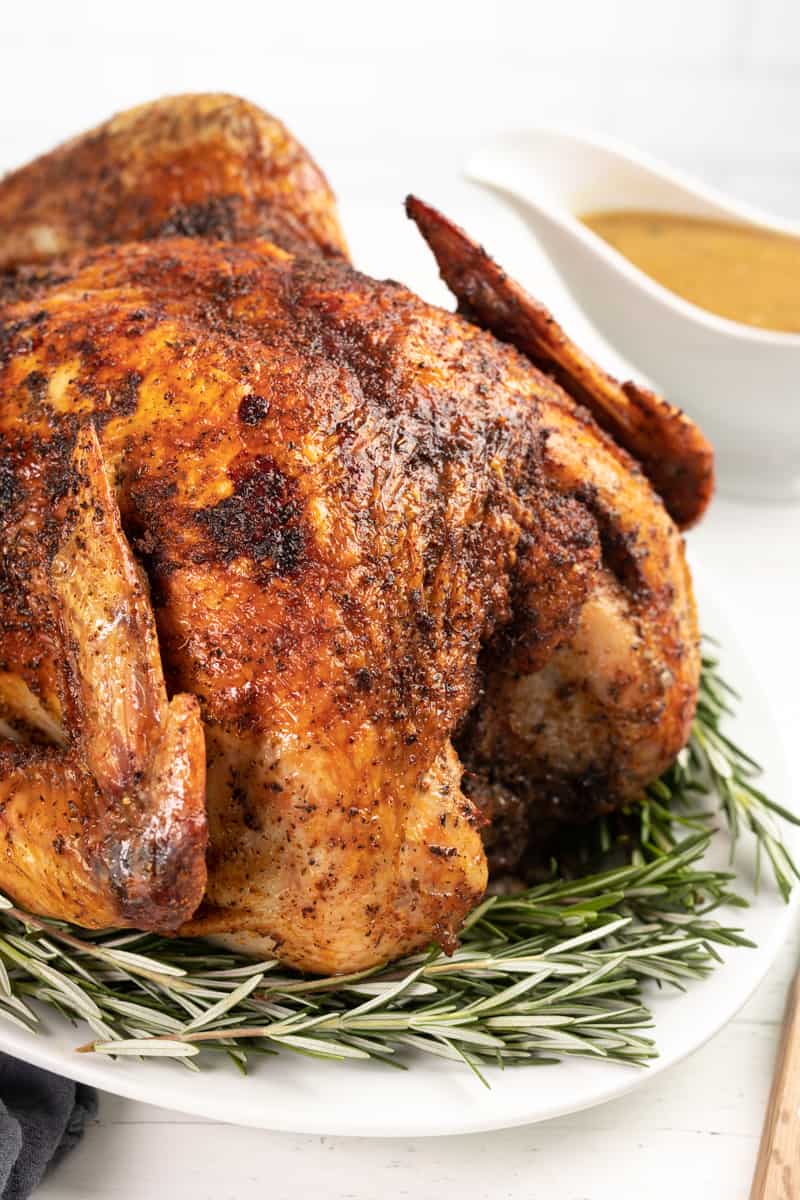
I’m sticking to real cooking science and tried-and-true steps that anyone can follow. This isn’t just another turkey recipe that promises to be foolproof. It really is. In fact, I worked directly with the food science team over at Thermoworks to get this one just right. Whether it’s your first time cooking the bird or you’ve done it for years, you’re going to love how easy this is. And even more, you’re going to love how it tastes.
Why This Method Works
The goal with turkey is simple. You want juicy breast meat and fully cooked, tender dark meat. The problem is they don’t cook at the same rate. The breast is done earlier and starts drying out while the legs are still catching up. That’s where this method comes in. It’s been tested over 8 holiday seasons and verified with USDA guidelines.
By chilling the breast meat before roasting, you slow it down just enough to give the dark meat time to catch up. The legs and thighs get a little head start at room temperature, while the breasts stay cool. It’s a smart way to bring both parts of the bird to their perfect temps at the same time.
We have you pull the turkey at 155 degrees. Some people worry about pulling the turkey before the breast hits 165 degrees, but here’s the thing: if it rests properly, it’s safe. The USDA says turkey needs to hit 165, but they also allow for slightly lower temps if the meat holds that temperature long enough. In our case, the turkey keeps cooking as it rests, and that final bit of heat pushes everything right where it needs to be. We still recommend using a good thermometer, so you can be confident that your turkey is both safe and juicy.
Cooking at a steady 350 degrees gives you even heat all the way through, without any big temperature swings. That helps everything roast more evenly and gives you that golden skin we all love. It’s a no-fuss method that actually works, and it’s why we use it every single year.
Equipment Checklist
✅ Roasting Pan: A sturdy pan with a rack helps the turkey cook evenly and keeps it out of the drippings.
✅ Digital Thermometer: You’ll want both an instant-read thermometer and a probe-style one if you have it.
✅ Kitchen Shears or Sharp Knife: For removing packaging, trimming, or spatchcocking if you’re going that route.
✅ Ice Packs or Sandwich Bags: To chill the breast meat before roasting. Just fill with ice and set them in place.
✅ Small Bowl and Spoon: For mixing and spreading your butter and spice blend.
✅ Foil: Use it to tent the turkey if it browns too quickly, and to cover it while it rests.
✅ Cutting Board: A large one gives you space to carve the turkey comfortably.
✅ Carving Knife: A sharp knife or electric knife will make carving much easier.
Thawing Your Turkey
To guarantee the juiciest turkey ever, you want to make sure that your turkey is completely thawed first. The USDA recommends thawing turkey in the fridge. Allow at least 1 day of thawing for every 3 to 4 pounds of turkey. To give you some perspective, that means that a 16-pound bird will take about 6 days to thaw. It’s just one more reason to buy your frozen turkey at least 1 week in advance!
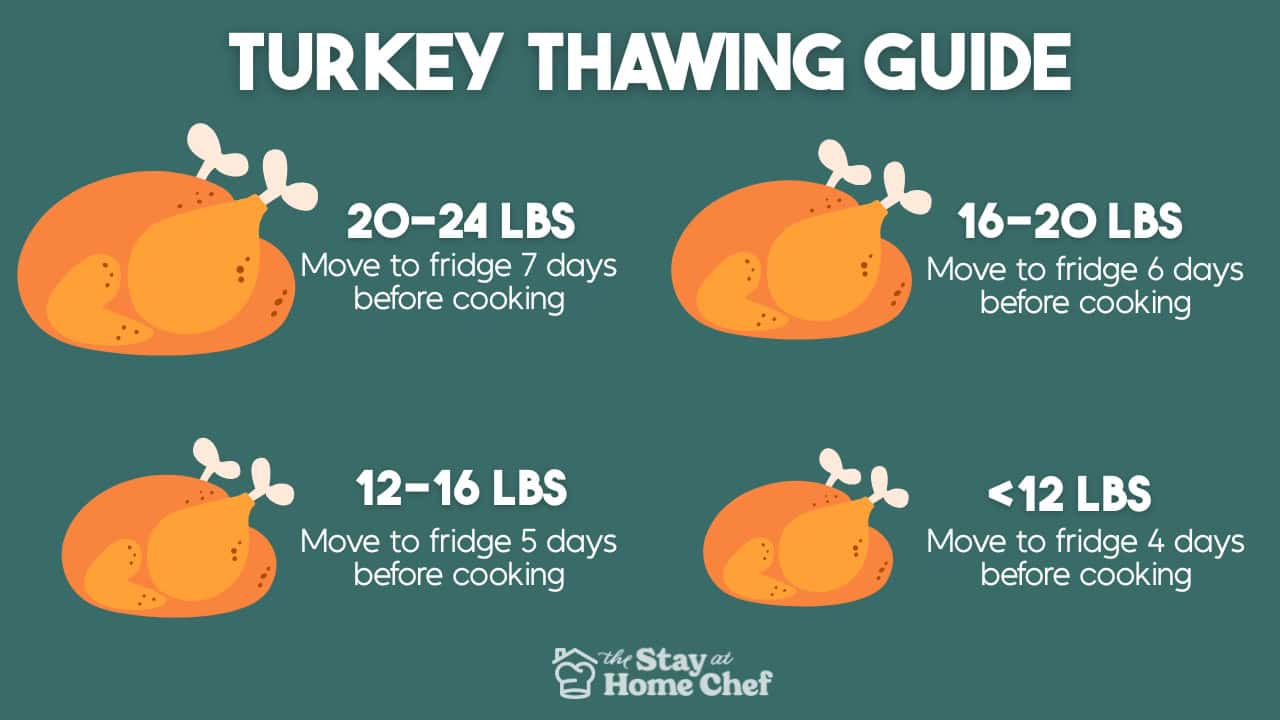
Cold Water Thawing Method
If you bought your turkey last-minute or forgot to move it to the fridge in time, there is another safe way to bring it to room temperature.
Leave the bird in its plastic wrapping and place it in your sink. Fill the sink with cold water. Change the water every 30 minutes, allowing for 30 minutes of defrosting time per pound. A 16-pound turkey will take about 8 hours to thaw.
The Ice Pack Trick
This is the step that sets my method apart. It might sound a little weird at first, but trust me, it works.
Right before roasting, you’ll chill the turkey breasts with ice packs while letting the dark meat warm up slightly at room temperature. This simple trick helps both parts of the bird cook more evenly. The breast meat, which tends to overcook, starts colder. The legs and thighs, which need more time in the oven, start closer to room temp. That little head start makes a big difference.
To do it, fill two sandwich-sized plastic bags with ice and seal them well. Clip the bags together and lay them directly over the breast area of the turkey while it rests on the counter. Leave them there for about one hour. After that, remove the ice bags and you’re ready to season and roast.
It’s a small step that takes hardly any effort, and it makes a big impact on how juicy your turkey turns out.
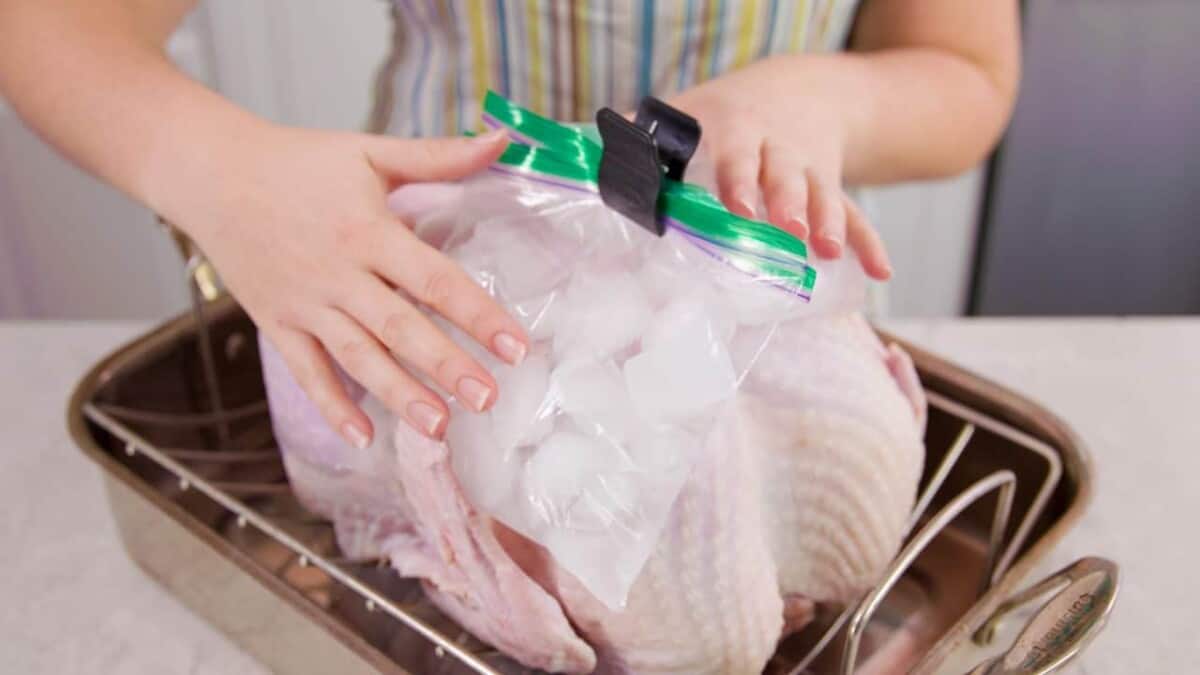
Prepping Your Turkey
Getting flavor under the skin is one of the best ways to keep your turkey juicy and tasty all the way through. It might feel a little awkward the first time you do it, but once you try it, you’ll never do it any other way.
- Make sure your turkey is fully thawed and the ice packs are off. Pat the skin dry with a few paper towels. This helps the butter stick better.
- Take your fingers and gently work them under the skin of the turkey breast, starting at the neck opening. You’re not removing the skin, just loosening it. Slide your hand in slowly and separate the skin from the meat. It should lift easily. Be careful not to tear it.
- Once the skin is loose, take your sliced or softened butter and tuck it underneath, right on top of the breast meat. You can use your fingers or a small spatula to spread it around as evenly as possible. This step adds moisture and helps season the meat from the inside out.
- Now mix up your seasoning blend in a small bowl. We use a mix of paprika, oregano, basil, salt, pepper, garlic powder, and onion powder. Sprinkle it generously over the outside of the skin, then rub it in so it sticks. Don’t forget to get the legs, wings, and back too.
That’s it. Your turkey is seasoned, buttered, and ready for the oven.
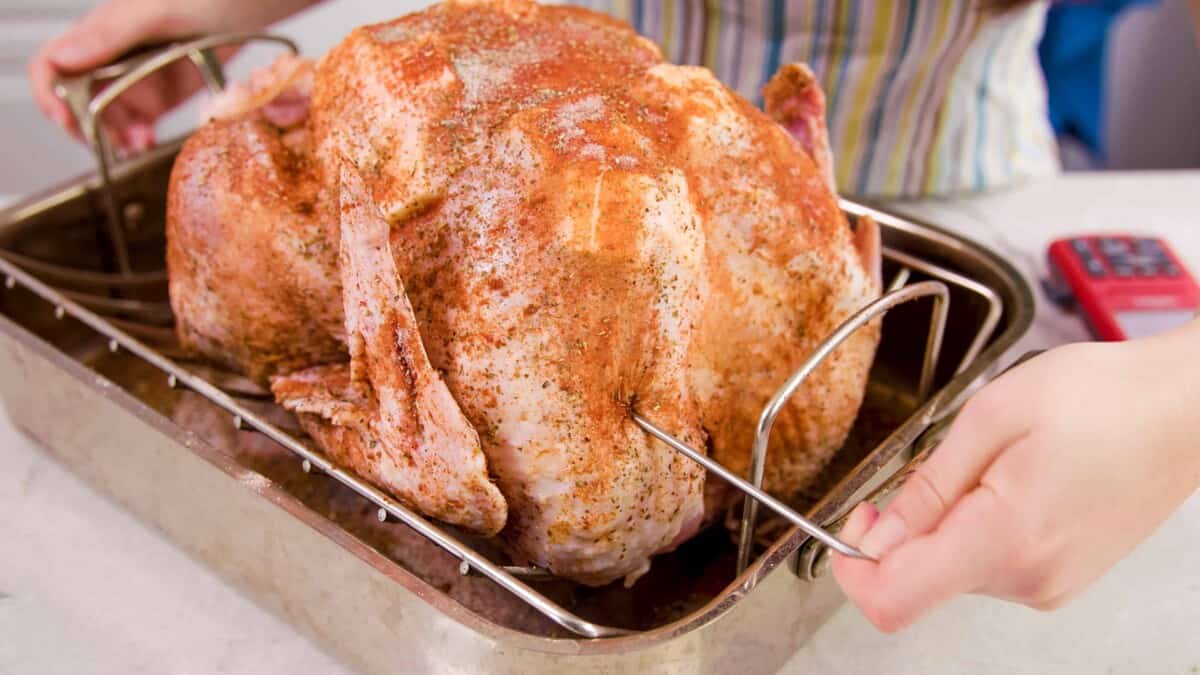
Internal Temperature Targets
We have two targets that we are looking for with internal temperature. We want a different temperature for white meat than we want for our dark meat. For our white meat (breasts) we are looking for an internal temperature of 155 degrees Fahrenheit. Insert the thermometer probe in the thickest breast section to measure.
For our dark meat (legs) we are looking for 175-180 degrees Fahrenheit. The higher temperature is to help break down extra connective tissue in the turkey’s legs, thighs, and wings.
Per the USDA, turkey meat is safe to eat when cooked to an internal temperature of 150 degrees if maintained for at least 5 minutes. Since our turkey will continue to maintain that temperature, and will even go up in temperature during the resting period, it is 100% safe to cook your white meat to only 150 or 155 degrees Fahrenheit in the oven before letting it rest.
| Turkey Weight | Estimated Cook Time |
|---|---|
| 12 pounds | 2.5 to 3 hours |
| 14 pounds | 3 to 3.5 hours |
| 16 pounds | 3.5 to 4 hours |
| 18 pounds | 4 to 4.5 hours |
| 20 pounds | 4.5 to 5 hours |
| 22 pounds | 5 to 5.5 hours |
| 24 pounds | 5.5 to 6 hours |
Quick Tips
- Target Breast Temp = 155°F; Target Thigh/Leg Temp = 175–180°F
- Start checking the internal temp 30 minutes before the low end of the time range.
- Use a digital thermometer in the thickest part of the breast and thigh, avoiding bone.
- Let the turkey rest at least 20 minutes before carving so the juices stay put.
Oven Temperature
Traditionally, turkey is roasted starting at a higher temperature to blast it with heat and form a crust before the temperature is lowered. In order to get a more even cook on our turkey, and to keep the temperature balance between our dark and white meat, we recommend cooking at a consistent 350 degrees Fahrenheit the entire time.
To Baste or Not to Baste?
Basting is a traditional method for ensuring a juicy turkey, but does it really work?
PROS: Spooning the juices back over the turkey lets them seep down into the meat, providing a refresh of juices to the bird.
CONS: One of the main downsides to basting your turkey is that every time you open the oven door the ovens temperature goes down by as much as 50 degrees. Depending on your oven and how consistent it is at maintaining temperatures, it could take quite a while for it to recover.
If you decide to baste your turkey, limit your basting to two different times, evenly spaced during the cooking process.
Frequently Asked Questions
Even with all the right steps, the breast meat can still overcook if you’re not careful with temperature. Make sure to use a good digital thermometer and pull the turkey once the breast hits 155 degrees. If your oven runs hot or the turkey isn’t positioned evenly, that can throw things off. Don’t skip the resting time either. That’s where the juices settle in.
This can happen, especially with really big birds. If your thermometer shows the legs are still low when the breast is at 155, carve off the breast meat and cover it to rest. Then return the legs and thighs to the oven until they hit 175 to 180 degrees. It’s a little extra work, but it keeps the breast from drying out.
You can, but it’s not necessary. This method is designed to keep the meat juicy without brining. If you love brining or already have a favorite method, it won’t hurt, just be sure to rinse and dry the bird well before roasting.
We don’t recommend stuffing the turkey. Stuffing adds time to your cook and makes it harder to cook everything safely and evenly. If you really want that classic stuffed bird, make sure the center of the stuffing reaches 165 degrees, even if that means overcooking part of the meat. We always suggest baking stuffing separately so you don’t have to worry.
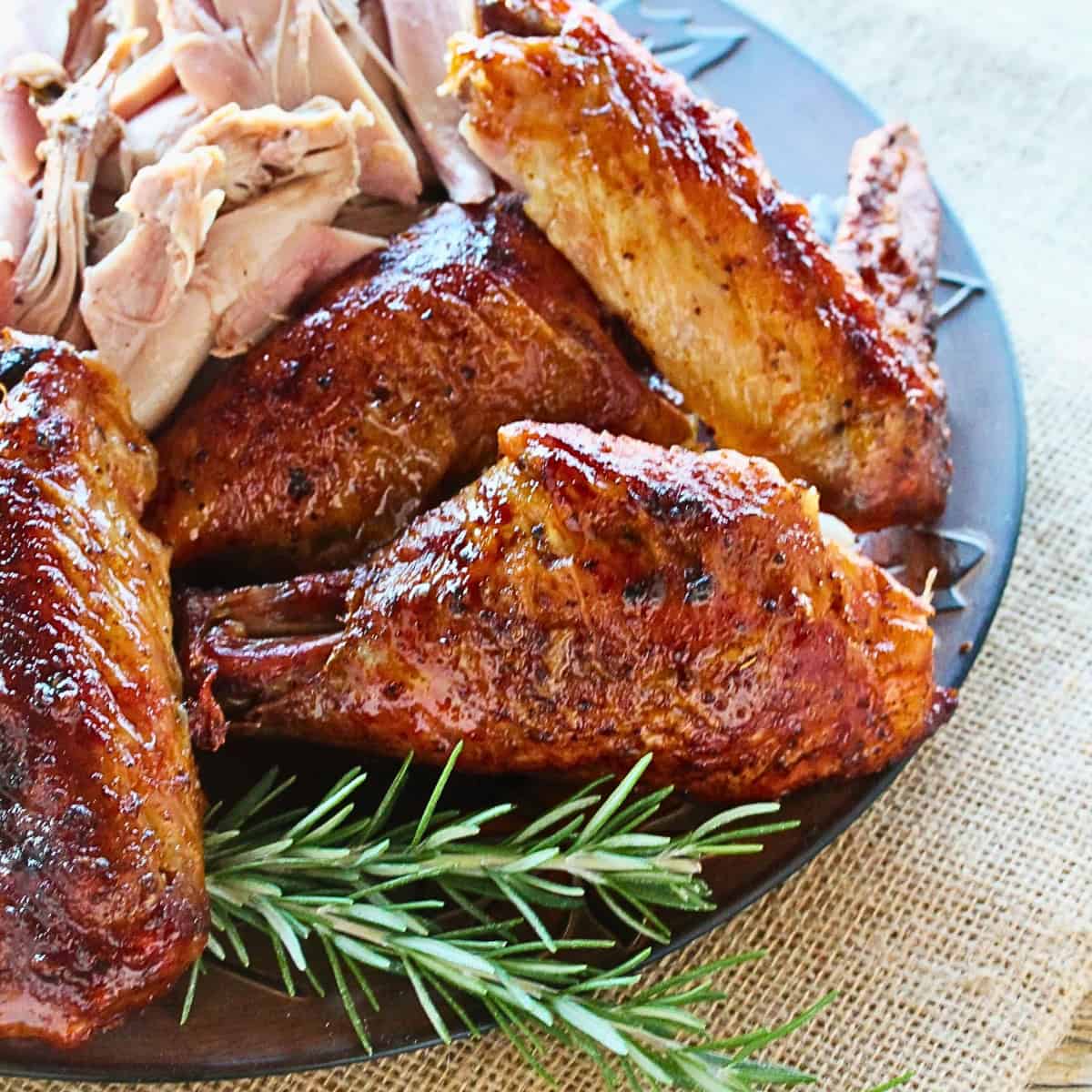
Flavor Variations
This recipe keeps things simple with a classic butter and herb rub, but you’ve got plenty of ways to change it up.
Try adding citrus zest and fresh herbs like thyme, rosemary, or sage. You can even tuck a few lemon or orange slices into the cavity to add a little extra aroma while it roasts.
If you’re a garlic lover, mash a few cloves into the butter before spreading it under the skin. For something smoky, stir in some smoked paprika or a bit of cayenne, and a few dashes of Worcestershire sauce.
Some cooks like to use a dry brine. That means rubbing the turkey all over with salt and letting it sit uncovered in the fridge for a day or two. It helps lock in moisture and gives you a crispy skin. A wet brine works too, but with this method, you don’t really need it to get a juicy result.
You can also baste your turkey with a flavored broth or a little melted butter mixed with wine or herbs. Just don’t open the oven too often. Too many peeks can mess with the temperature and slow everything down. One or two bastes is all you need.
Food Safety: How long can turkey sit out?
Your turkey is safe to sit out at room temperature for a total of 4 hours. These 4 hours will include both before and after roasting as well as serving. This means it is completely safe for your turkey to sit out with the breasts under ice packs in order to chill the white meat and still leave you with 3 hours to work with to get your turkey into the oven, rested, and served.
What to do with Leftovers
Leftover turkey is one of the best parts of the holiday meal. You can go classic with a sandwich piled high with turkey, stuffing, and cranberry sauce. Or keep things simple with a little mayo, mustard, and toasted bread.
If you’re in the mood for something cozy, use the leftovers in a slow cooker turkey soup or turkey tetrazzini. You can also make turkey enchiladas, pot pie, or even toss chopped turkey into a salad for a quick lunch the next day.
Don’t forget about the bones. Save the carcass and simmer it with onions, carrots, celery, garlic, and herbs for a rich homemade stock. Freeze it in plastic bags and you’ll be set for soups and sauces all winter.
Storage & Reheating
Store leftover turkey in an airtight container in the refrigerator for up to 4 days. You can keep it sliced, shredded, or in whole pieces depending on how you plan to use it.
To freeze, wrap leftovers tightly and place in a freezer-safe bag or container. Freeze for up to 3 months. Thaw overnight in the fridge before reheating.
To reheat turkey without drying it out, microwave individual slices in 30-second increments with a damp paper towel on top. For a larger portion, place the meat in a baking dish with a few tablespoons of broth and a pat of butter. Cover it with foil and warm it in the oven at 350 degrees until heated through.
Serve your turkey with…
Watch the video below where Rachel will walk you through every step of this recipe. Sometimes it helps to have a visual, and we’ve always got you covered with our cooking show. You can find the complete collection of recipes on YouTube, or our Facebook Page, or right here on our website with their corresponding recipes.
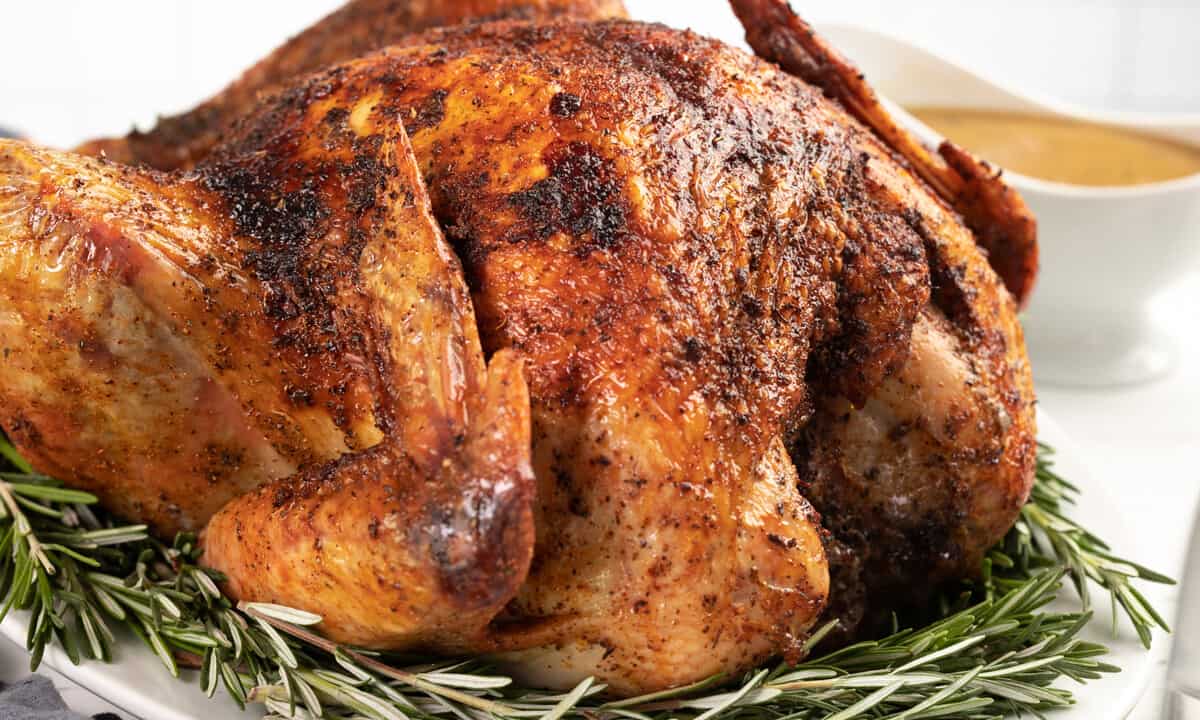
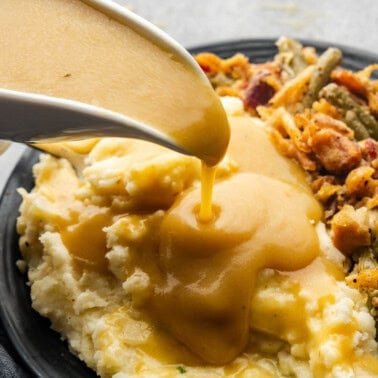
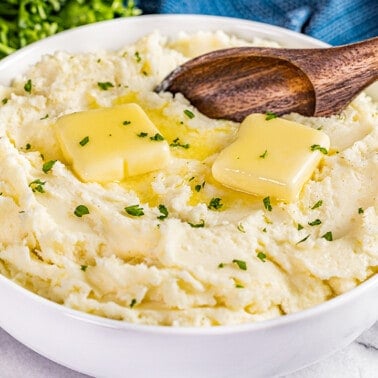
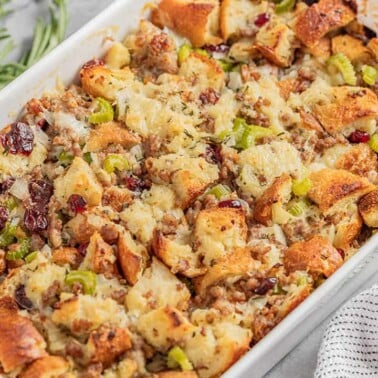
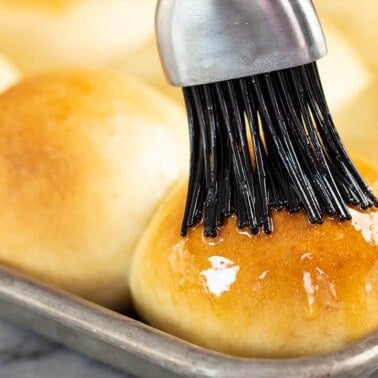
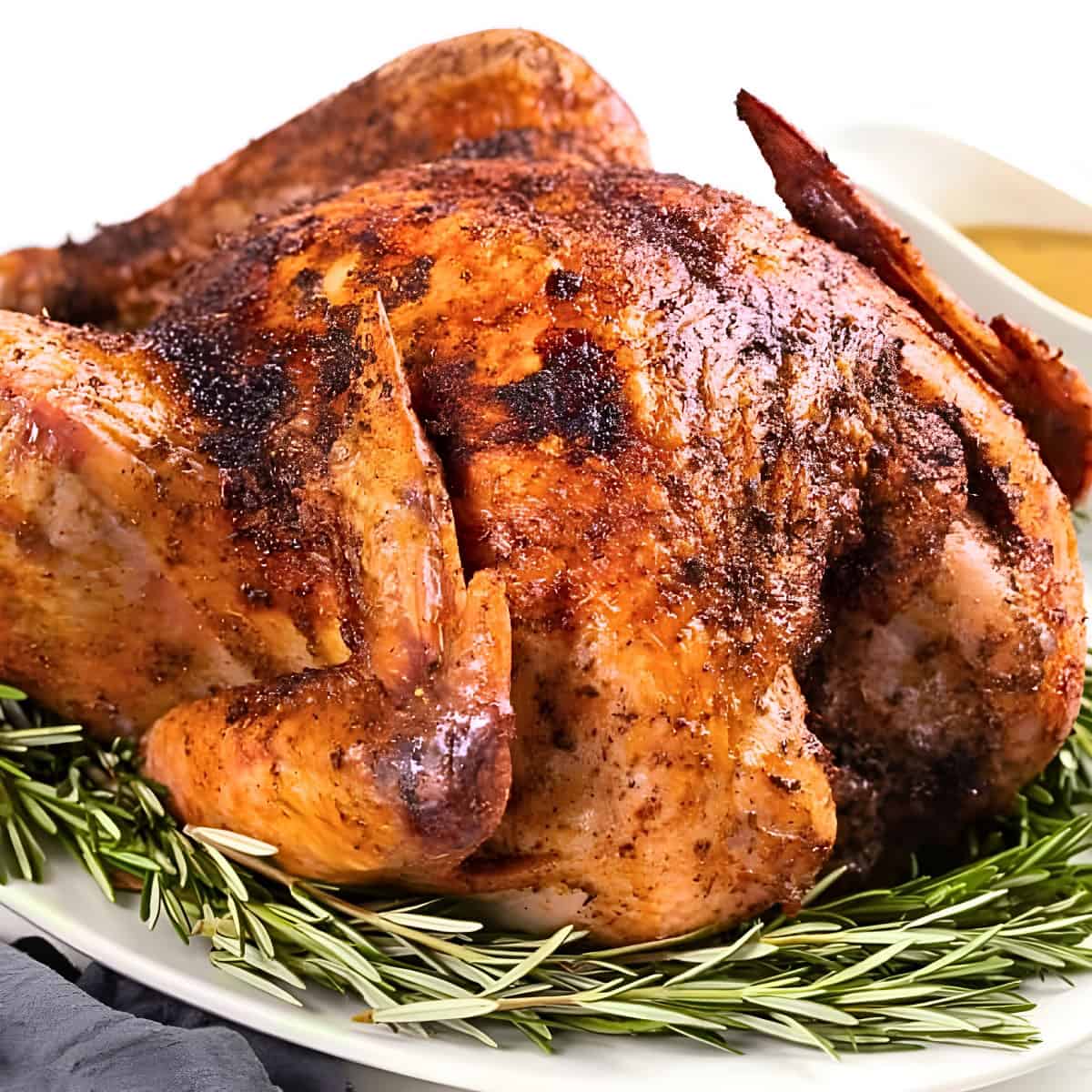
This recipe, just WOW. Made this yesterday along with the Easy Green Bean recipe (without canned soup). My sister-in-law, who is quite an accomplished cook told me that she has never had a turkey this tender and juicy, ever! Additionally, the Green Beans were the only dish that was completely eaten up. Thank you, thank you, thank you!!!
Due to circumstances beyond anyone’s control, I am coming here at 6pm Thanksgiving night (after enjoying a very satisfying meal already) to learn this skill for my first time. Thank you very much for being here in my time of need.
Do you add water or broth to the roasting pan?
Thank you!
Nope! Just the recipe as written.
Is it possible to get the measurements for a 25lb turkey?
We have a scaling feature built into the recipe card that you can use to run the ingredient calculations for you to increase the amounts.
I want to stuff my turkey this year. Can I do it following your recipe ?
Yes, you can stuff any turkey, but be warned that for food safety reasons, the stuffing will need to reach an internal temperature of 165 degrees. Unfortunately, the only way to get your stuffing to that internal temperature requires you to cook your turkey above that temperature, which will dry it out.
I use the neck, gizzard etc to make the base of my gravy. Best Turkey gravy ever!
I have always used a turkey sized oven cooking bag and some type of injector based seasoning. I rub dry seasoning on turkey and cooking directions on oven bag. I also bake breast side down. This is the easiest and most foolproof method I know
Thaw the turkey breast side down. The natural juices with settle in the breast and it won’t be dry. I have done this for 50+ years. Passed down from my Grandma.